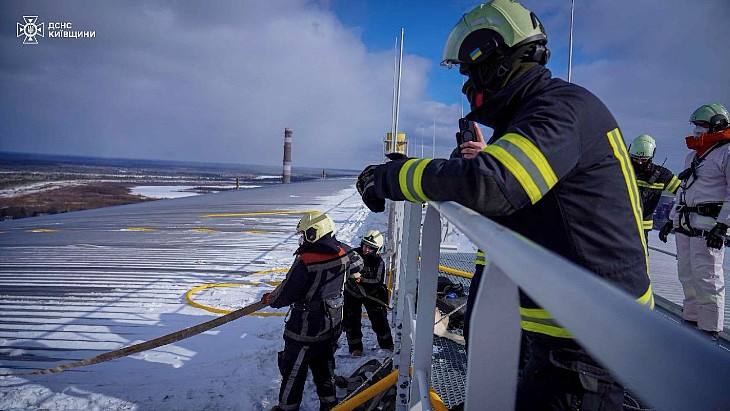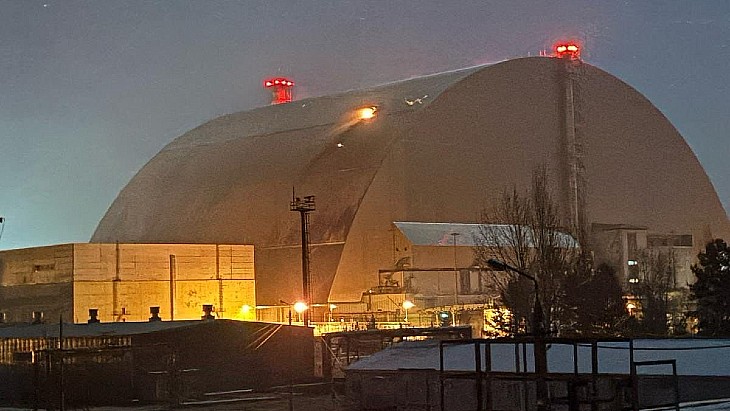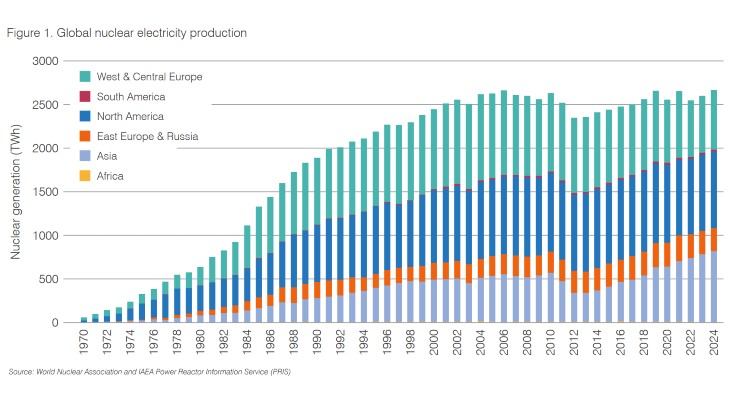Permission to restart a South Korean nuclear power reactor which has been in an extended outage may offer limited relief as the country struggles to meet electricity demand during a heatwave.
The South Korean nuclear regulator, the Nuclear Safety and Security Commission (NSSC), yesterday approved the restart of unit 4 of the Hanul nuclear power plant. The reactor was taken offline in September 2011 for maintenance and periodic inspection but corrosion was discovered in the unit's steam generator tubes. Plant operator Korea Hydro and Nuclear Power (KHNP) decided to replace the steam generator. Hanul 4 has now again started supplying much-needed electricity to the grid, but the 1000 MWe pressurized water reactor is not expected to reach full capacity until after 21 August.
Another five Korean nuclear power reactors remain offline either for inspections and maintenance or as a result of a document falsification scandal.
In May, an NSSC investigation found that safety-related control cabling with falsified documentation had been installed at four of KHNP's reactors: Shin Kori units 1 and 2 and Shin Wolsong units 1 and 2. KHNP was ordered to stop operations at Shin Kori 2 and Shin Wolsong 1, while Shin Kori 1 has remained out of operation following scheduled maintenance. In addition, the newly-constructed Shin Wolsong 2, which is awaiting approval to start commercial operation, has been prevented from starting up. The NSSC told KHNP that the four units will not be allowed to operate until the cabling has been replaced. This was expected to take about four months over summer.
Heatwave fuels demand
South Korea is experiencing a heatwave which has seen temperatures in some parts of the country approach 40°C. The heatwave began in June and is expected to continue for at least another week.
The heavy use of air-conditioning systems means that power supplies are barely meeting demand. With electricity consumption expected to reach a peak over the next few days, grid operators have seen power reserves briefly drop below what is considered the safe level of 4000 MWe. Reserves may drop to as low as 1800 MWe over the coming days.
The situation has been exacerbated by the shutdown of a 500 MWe coal-fired plant in Dangjin due to problems with its turbine. The plant is not expected to return to service until next week at the earliest. Another 200 MWe coal-fired plant also briefly shut down following a water circulation pump failure, but is now operating again but at only half its capacity.
Minister for trade, industry and energy Yoon Sang-jick urged the public to cut electricity consumption. He said, "We are in a very desperate situation, where we cannot overcome this crisis without all your active support." A temporary ban was imposed on the use of air-conditioning in all government and public office buildings, together with other power-saving measures.
Yoon warned, "The country's maximum electricity demand is expected to hover above 80,000 MWe this week, 300 MWe higher than last year's peak and far exceeding its generation capacity of 77,400 MWe." He added, "We may have to carry out a rolling blackout ... if a single power plant goes out of operation."
Researched and written
by World Nuclear News












